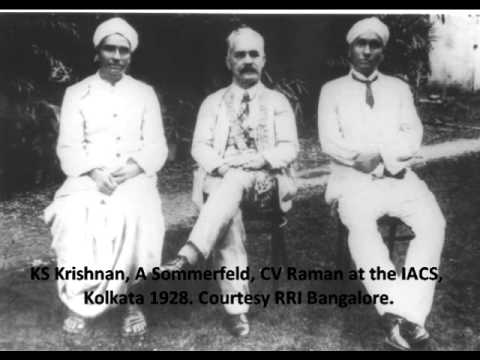Eighty nine years ago, an Indian scientist discovered a phenomenon that would change the way the world understood the scattering of light. For this discovery, he was awarded the Nobel Prize in Fisica in 1930, being the first Asian and non-white to have received this laurel.
Il fenomeno era l'effetto Raman e l'uomo dietro di esso era C. V. Raman. L'effetto Raman dimostra che i fotoni dispersi non devono necessariamente avere la stessa energia (frequenza e lunghezza d'onda) dei fotoni incidenti. Una certa quantità di energia viene persa quando un fotone colpisce un atomo, e ogni atomo può contenere solo una specifica quantità di energia. Lo studio delle energie corrispondenti agli spostamenti di frequenza Raman aiuta a identificare la composizione e le proprietà dei materiali.
C.V. Raman had one dedicated student and collaborator who helped his research realize success. By his side was K. S. Krishnan, who contributed enormously to Raman’s studies and experiments. Krishnan, who was working in Madras Christian College, moved to Calcutta in 1920 to work with Raman. During the years 1925 to 1928, Krishnan authored singly or jointly 16 papers, under Raman’s tutelage. He was the one who first gave Raman a demonstration of the scattering. Between Feb 19th and 26th, 1928, Krishnan performed many experiments that proved the inelastic scattering of light. The discovery of the Raman effect was made jointly by Raman and Krishnan on February 28th, which is now celebrated as National Science Day.
Dopo che Raman vinse il premio Nobel nel 1930, ci furono molte polemiche che suggerivano che Krishnan non avesse ricevuto abbastanza credito per il suo contributo. Tuttavia, Krishnan ha detto questo:
“If you read the Nobel lecture, which is a true and honest account of the progress and history of the subject, Professor names all his collaborators in order starting with K. R. Ramanathan giving everyone (and including me) his due credit. Again and again in public lectures he always mentioned that I collaborated with him in the discovery of the effect and that our collaboration was similar to that of Bowen and Millikan which was praise indeed”.”
While C. V. Raman made a significant breakthrough, let’s also remember that his discovery was not made by one person alone. It was the product of a collaboration between two scientists, the result of two people putting their heads, skills and expertise together.
As we celebrate National Science Day, here’s to more wonderful collaborations, discoveries and innovations!
